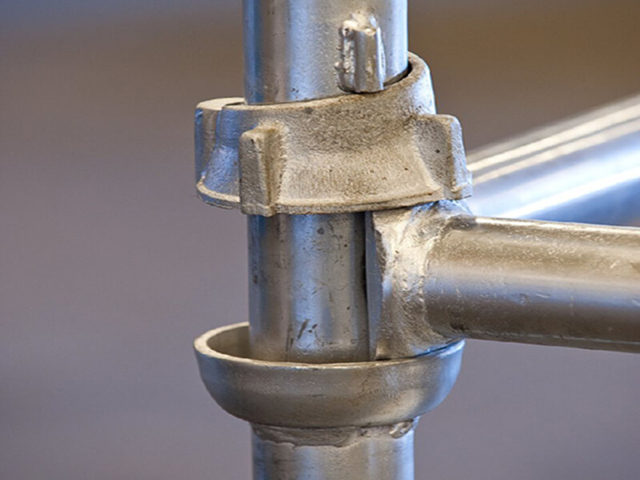
ADTO News
Does the Manufacturing Process of Cuplock Scaffolding Affect its Quality and Lifespan?
Precision Machining of Components
Tube Dimensions
The diameter and wall thickness of the scaffolding tubes need to be precisely machined. If the diameter of the vertical tubes is not consistent or within the specified tolerance, it can lead to a poor fit with the cuplock joints and horizontal members. For example, if the tube diameter is too large, the horizontal members may not insert properly into the cuplock joints, and if it's too small, there may be excessive play, reducing the stability of the scaffolding. Inconsistent wall thickness can also affect the load - bearing capacity of the tubes. Tubes with thinner-than-specified walls may buckle or deform under load, shortening the lifespan of the scaffolding.
The length of the tubes and other components should also be accurate. Precise cutting of the tubes ensures that the scaffolding can be assembled to the correct dimensions. If the length of the horizontal members is incorrect, it can lead to an uneven or unstable scaffolding structure, which can increase the stress on the components and accelerate wear and tear.
Cuplock Joint Precision
The manufacturing of cuplock joints requires high precision. The shape and size of the cups and the locking mechanism need to be exact. A well - made cuplock joint should have a snug fit for the horizontal members and provide a reliable locking function. If the joint is poorly manufactured, for example, if the locking mechanism does not engage properly, the horizontal members may become loose during use. This can lead to instability and potential safety hazards, as well as cause the scaffolding to deteriorate more quickly due to the abnormal movement and stress on the components.
Welding Quality
Weld Integrity
If the scaffolding components are welded together (such as the attachment of cuplock joints to vertical tubes), the quality of the welds is crucial. Welds should be free of defects such as cracks, porosity, and incomplete fusion. Cracks in the welds can act as stress concentrators, and under load, these areas are more likely to fail. Porosity, which is the presence of small holes in the weld, can reduce the strength of the joint and make it more vulnerable to corrosion. Incomplete fusion between the base metal and the weld material can also lead to weak joints. High - quality welding with proper techniques and qualified welders can ensure strong and durable connections, increasing the overall lifespan of the scaffolding.
The type of welding process used can also affect the quality. For example, gas metal arc welding or shielded metal arc welding are commonly used in scaffolding manufacturing. The correct choice of welding process, along with appropriate welding parameters such as current, voltage, and welding speed, can result in better-quality welds.
Post - weld Treatment
After welding, proper post - weld treatment is necessary. This may include stress-relieving heat treatment to reduce residual stresses in the welded components. Residual stresses can lead to distortion and cracking over time. In addition, cleaning the welds to remove slag and other impurities is essential. Slag left on the weld can act as a site for corrosion initiation, which can weaken the structure and reduce the lifespan of the scaffolding.
Assembly and Quality Control during Manufacturing
Proper Assembly
The way the scaffolding is assembled during the manufacturing process affects its quality. Components should be assembled according to the correct procedures and specifications. For example, the order of inserting horizontal members into cuplock joints and the proper tightening of any fasteners are important. If the assembly is not done correctly, the scaffolding may have a sub - optimal structure, with components not in the correct alignment. This can lead to premature wear and abnormal stress distributions during use.
Quality Control Checks
Rigorous quality control checks at various stages of manufacturing are essential. This includes visual inspection of components for surface defects such as scratches, dents, and burrs. Scratches and dents can act as points of stress concentration, and burrs can affect the fit of components. Dimensional inspections using precision measuring tools should also be carried out regularly to ensure that all components meet the design requirements. Additionally, load-testing of sample scaffolding units can help identify any potential structural weaknesses before the products are released to the market, ensuring a higher - quality product with a longer lifespan.


 Live Chat
Live Chat

